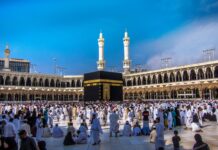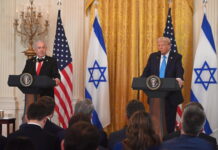Prominent Arab journalist Abdel Bari Atwan warns of the dangers of a Saudi-Iran confrontation in the Middle East.
In the wake of the Saudi’s decision to execute leading Shia cleric, Nimr al-Nimr, relations between the kingdom and Iran have polarized the region into a Cold War stand-off that threatens to spread and which has scuppered any chance for a political solution to the Syrian crisis.
Protests in Tehran, which saw the Saudi Embassy set ablaze, led to Riyadh severing diplomatic relations with its main regional rival. Sheikh Nimr al-Nimr had openly criticized the regime and called for reform, but it seems his main crime was being a Shia.
Wikileaks cables suggest that the US never considered him a security threat.
Bahrain – which also has a restive Shia majority under a Sunni-dominated regime – followed the Saudi lead on Monday as did the UAE and Sudan. All three countries cited “Iranian interference” in MENA as their reason.
Iran’s foreign ministry, meanwhile, accused Riyadh of “looking for excuses to pursue its own unwise policies to further tension in the region.”
Following America’s rapprochement with Iran last year, a negotiated settlement in Syria became a possibility for the first time – experts were unanimous that no political solution was possible without the involvement of Iran and Tehran participated in the last round of talks on Syria in Vienna at Russian President Putin’s insistence.
Subscribe to our newsletter and stay updated on the latest news and updates from around the Muslim world!
This new row threatens that peace process.
Worse, the Sunni-Shia divide already informs the Syrian crisis and the war in Yemen where Iran and Saudi Arabia are playing out a proxy war. With Russia and China lining up behind Iran, and Washington (albeit reluctantly) siding with its most powerful (and richest) regional ally the potential is greater than ever for regional and even international escalation.
Until the recent diplomatic crisis, the world’s great powers seemed united against their common enemy – Islamic State – but now the region’s alignments have returned to Square One.
“Saudi aggression”
If Tehran’s assessment of the situation is correct – that Riyadh has a hidden agenda here and is deliberately creating tension – what is motivating the Saudi aggression?
There are several possibilities:
1) The Saudi military intervention in Yemen against the (Shia, Iranian-backed) Houthis has been disastrous. Riyadh may well wish to deflect attention from this ongoing failure.

2) Riyadh has been somewhat humiliated in the Syrian theatre where Russian diplomacy has persuaded the West to work for a political solution and put aside its pre-condition (still vigorously upheld by the Saudis) that Assad must go. This challenge to Iran could be an attempt by Saudi Arabia to reassert its regional influence.
3) The Saudis and most of their neighbours in the Gulf are worried about Iranian agitation among their own restive Shia populations and wish to clamp down on dissent.
4) The Saudi economy has been challenged by tumbling oil prices with the World Bank suggesting the country could run out of money in five years. With internal unrest due to new austerity measures (which include slashing subsidies and welfare provision) a mounting possibility, Riyadh may be seeking to turn the population’s gaze away from internal affairs towards an external menace.
Some or all of the above are possible, but the greatest motivation is to scupper Tehran’s gains on the international stage and diminish its growing influence.
Iran’s geostrategic position
Until last year, Iran was the West’s bête noire, a “terror state”; now, however, the nuclear deal brokered by Washington has seen it brought back into the fold, assets unfrozen and sanctions lifted.
Tehran is ready to start pumping millions of extra barrels of oil a day into a market that is already glutted due to Riyadh’s decision (via Opec) not to limit supply. Iranian oil is as much a threat to Saudi stability as its armies and proxies.
Quite apart from the financial challenge oil-rich Iran can mount, Saudi Arabia’s own major oil fields are located in the restive East, home to its Shia minority. Sheikh Nimr’s home town is Qatif, the nerve-centre of the Saudi petroleum industry, where violent protests against his execution took place on Monday with at least one death at the hands of the police.
In addition, most of Saudi Arabia’s oil output passes through the Shia heartland via pipelines which run close to major roads, making them difficult to protect against attack.

The West warned Riyadh that executing Nimr would be a grave mistake and Iran perceives it as a declaration of war. Nevertheless, the 30 year-old crown prince and defence minister, Mohammad bin Salman, appears to make all the decisions these days and must have given the command to behead the cleric.
A resurgent Iran, armed by Russia and China, is a daunting prospect but provoking it to all-out war – on the assumption, presumably, that the West will stay onside – is ill-judged and reckless.
With the region on the brink of sectarian conflagration, anxious eyes are being cast at Turkey, the major Sunni player. Ankara has closed its embassy in Tehran but has not withdrawn its Ambassador, emphasizing its willingness to help ease Saudi-Iranian tensions.
This is one ray of hope. Russia and China, too, have expressed alarm over the potential for escalation.
The state of apathy that has characterized Arab politics recently is suddenly being lifted, with two emergency meetings to discuss the crisis called for the weekend: the Gulf Co-operation Council (GCC) will convene on Saturday and Arab foreign ministers will meet in Cairo the next day.
Hardliners in both Saudi Arabia and Iran are the main beneficiaries of escalating sectarian tensions. Some commentators suggest that Saudi Arabia is actually helping ISIS by inflaming hatred of the region’s Shia population – a core element of the extremists’ own agenda.
Faced with defeat in Ramadi, ISIS will be grateful to receive new recruits inspired by Saudi incitement against the Shia and aggrieved by the execution in Riyadh of 42 “al-Qaeda elements.” Sources talk of a new wave of ISIS volunteers from all over the Muslim world.
From a position where a solution for Syria seemed within reach, the coming year’s agenda is now darkened by ongoing conflicts and new wars. No regime is safe from revolution or extremism, national boundaries are shifting and international alignments face challenges on every front.
As we enter 2016, nothing is certain any more in the Middle East.






















